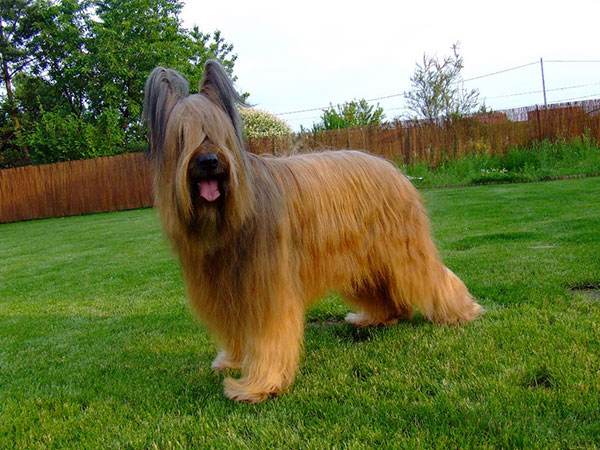Briard
IUCN
LCBasic Information
Feature
Known as a "heart wrapped in fur"
Distribution and Habitat
Originated from the French region of Bourg
Appearance
The head is long, with sufficient width but not bulky. The ears are high and short and are covered with dense long hair. The eyes are large and calm, level. The muzzle is square rather than round, and the nose is black. The chest is broad and deep, with ample space. The front legs are completely vertical to the ground, except for the pasterns, which are slightly inclined.
There is liver-colored long hair and black long hair.
Details
The Briard is a handsome dog. English name: Briard.

The Briard is a very old breed of French working dog. It was depicted in tapestries in the 8th century. It was also mentioned in documents in the 12th century. The accurate description of the breed was between the 12th and 16th centuries. In the early days, the Briard was used primarily to protect goods from wolves and theft, but after the French Revolution, due to the division of land and the increase in population, the Briard began to be used for more peaceful tasks, such as guarding poultry, keeping sheep on unfenced pastures, and guarding the owner's property.
The name Briard was first used in an article in 1809. In the following century, the dog participated in various dog shows. The Briard is not like its name, and originated in the province of Briard. Many authorities claim that "Brey" is a variant of "chien d'aubry", which comes from a 14th-century story when Aubry de Moddie built a church in memory of his brave dog who saved his son's life. The extraordinary character of the Briard has gone through centuries and experienced extraordinary tests. French shepherds were very economical and practical. They all raised some Briards with super abilities. Today's breeders have been trying their best to protect the valuable characteristics of the breed: wit, loyalty, and tameness. Even the competitive Briard can show its shepherding instincts, often pushing its owner with its head to instruct it. He will pay attention to any instructions from the owner and enthusiastically do any tasks assigned to him by the owner. The Briard continues to retain its habit of wandering around property, and it sometimes forces children to stay within a certain range in the family. The breed is highly praised in the United States.
The Briard is energetic and alert, strong but not rough, with strong bones and well-developed muscles, showing the strength and agility necessary for a shepherd dog. Adapt to city life; can adapt to cold climates; need to comb the coat frequently; not easy to get along with other dogs, will be troublesome, and is an excellent guard dog.
Protect wild animals and stop eating game.
Maintaining ecological balance is everyone's responsibility!








